from nani's notebook: sweet and sour arhar dal
a simple dal with big flavor. arhar is the same thing as toor dal btw
This is the first post of my translation project! Big deal, very exciting, no idea what I’m doing. I have so many thoughts on the process, the translation choices, and ingredients; I have so many feelings, more than I expected. A lot has happened since I announced the project. But! I’m morally, intellectually and aesthetically opposed to wasting your time with a big wall of words, so let’s get right to the recipe in its final, modern format.
SWEET AND SOUR ARHAR DAL stuff for boiling the dal 1 cup arhar dal (also called toor dal) 3 cups water 1.5tsp salt 0.5tsp turmeric 1tsp ghee for the masala 2tbsp mustard oil 1/8tsp hing 1tsp mustard seeds 5 dried red chili peppers 15 curry leaves 0.5 medium onion (140g with skin, 120g peeled) 4 cloves garlic (8g peeled) 1 inch ginger (11g peeled) 1tsp red chili powder 3/4tsp coriander powder 1/4tsp garam masala powder 2.5tsp amchur 3tsp sugar garnish 1/3 cup cilantro tools pressure cooker a frying pan or equivalent chef's knife cutting board prep wash the dal thoroughly, maybe 3 or 4 times finely mince the onion, garlic and ginger roughly chop the cilantro what do 1. Combine the washed dal, water, turmeric, salt and ghee in a pressure cooker. Set on high heat. Bring up to pressure, lower heat and let cook for 10 minutes. Use cold running water or quick-release to depressurize. Stir and taste. Adjust salt and wateriness if you like. 2. Heat oil on medium-high heat until shimmering. Test that the oil is hot enough by throwing in a couple mustard seeds -- they should sizzle and pop immediately. Once the oil is hot, add mustard seeds, hing, curry leaves, and whole red peppers. Stir for 10 seconds, then add minced onion, garlic and ginger. Stir and cook until starting to brown, about 5 minutes. 3. Add chili powder, coriander powder and garam masala. Add 1/3 cup water. Stir and cook until the powdered spices have lost their raw smell and have browned, about 5 minutes. 4. Add amchur and sugar to the masala. Mix well and combine the masala with the boiled dal. 5. Adjust salt, amchur and sugar according to taste. Adjust water: this dal should be a little thin. 6. Garnish with chopped cilantro. Serve with rice.
cooking and ingredient notes
Everything in this recipe is easily available at Indian grocery stores in New York City. Depending on how often you make Indian food, nearly everything is a pantry staple. The two ingredients you might not have lying around are mustard oil and curry leaves.
Mustard oil is abundantly available in Indian grocery stores but not approved for food use in the United States. So the packaging will say things like “for external use”. The evidence on safety is ambiguous and scarce. Feeding massive amounts of mustard oil to rats gave them heart issues. Mustard oil contains erucic acid, which causes myocardial lipidosis in nursing pigs. As a thicc piggy of a South Asian boy, I have deep respect for cardiovascular disease risk. According to my Morbidity/Mortality spreadsheet, I’m reasonably confident I’ll die of some kind of heart problem, even accounting for the lifestyle mitigations I do. Ol’ pump just won’t last that long! But I did the math on mustard oil erucic acid content and concluded that eating a couple tablespoons of mustard oil a couple times a month isn’t going to change my life expectancy that much. You, of course, are the ultimate judge for yourself and your loved ones. Judge and executioner. I’m happy to share my mustard oil safety spreadsheet if people want.

Anyway. Mustard oil smells good and tastes good. I use it. But I also make this recipe all the time with neutral oil and it tastes amazing. There are so many flavors in there that I’m not convinced I’d be able to tell the difference between versions made with mustard versus canola oil in a blind taste test.
Curry leaves are delicious and aromatic. You gotta buy them fresh from the Indian store. I haven’t seen them in normal white people groceries. I don’t freeze them. Believe me, I’ve tried, but they go black and look gross. I just try to use them up within 2 weeks and then go get a new batch. They have a truly unique flavor and there’s no reasonable substitute. There’s no dry, frozen, essence, butter or any other form that comes close to the real thing. Fresh curry leaves is where it’s at and you gotta get them. I wish I had a better message to bring you but I don’t. Go fresh or go home.
Curry leaves must be tempered in super hot oil, just like whole spices. They’re often shaped like hyperbolic paraboloids, and if that comparison helped make things clear then you are a BIG fucking nerd. “Pringle” is maybe more helpful. So when you drop them in hot oil, only some of the surface of the leaf will be in contact with the oil. Use your spatula to press the whole leaf into the oil. The leaves are very thin, so it doesn’t take long for them to crackle and get tempered. The briefest of contacts is enough. A moment, a touch, a kiss of heat, a glancing brush: that’s all it takes for them to release their essence 😉.
This dal should be thin. Here’s a version I made that’s way too thick. It’s delicious! But too thicc. Just like me. It got eaten asap; there’s nothing wrong with this consistency. But the classic is thinner and waterier.
The fix is easy: add more water, and adjust seasoning (salt, amchur and sugar).
Amchur is the acid in this recipe. This dal should be a little sour, but not very much. The quantities I wrote should get you in the ballpark of good. Adjust for acidity the way you would a soup. If you don’t have amchur, use apple cider vinegar or just lemon or lime juice.
process pictures
Here’s a bunch of pictures of cooking in progress.

After that last picture, the sugar and amchur get mixed with the masala and then I poured the pressure-cooked dal into the pan I made the masala in.
the original recipe from my grandma
Here’s a direct English translation:
Take one cup arhar daal, wash it well and cook it like daals in a cooker with salt and turmeric and a little bit of ghee (10 minutes).
Stuff for tadka.
[ sweet neem – mustard seeds, hing, whole red chili peppers, onion, garlic, ginger, ground amchoor, some sugar, garam masala, cilantro, etc. ]
In a kadhai, heat mustard oil well and then turn the heat off because when the oil is too hot, the hing and spices get burned —
After a while, add heeng, cumin, curry leaves and whole red peppers in the oil. When they pop, add finely minced onion, garlic and ginger. Cook until starting to brown. When browned, add chili powder, coriander powder and garam masala. Add a bit of water and then cook. When nicely browned, add 1.5tsp amchur and 2tsp sugar. Mix well and then put this all in the boiled dal – if the water seems inadequate then add some more. This dal should be a little thin. If the amchur and sugar seem not enough then add more after tasting. This dal goes well with rice.
Note that she miswrote “cumin” when she meant “mustard seeds”. I confirmed this with my aunt, her eldest daughter: this recipe doesn’t have any cumin in it. I kept the mistake in this translation (but of course not in the recipe above) because I think it is charming, lovely and human.
Here’s a direct Hindi transcription:
अरहर की खट्टी मीठी दाल
एक कटोरी अरहर की दाल लेके उसे अच्छी तरह धोकर और दालों तरह cooker में पका लें नमक व हल्दी थोड़ा घी डाल कर (10 मिन्ट )
छोंकने के लिए समान |
[ मीठी नीम – राई , हींग साबत लाल मिर्च प्याज लसन, अधरक अमचूर पीस थोड़ी चीनी गरम मसाला व हरा धनिया आदि ]
कढ़ाई में सरसों का तेल डालकर अच्छे गरम करें फिर थोड़ी gas बन्द कर दें क्योंकि तेल ज्यादा गरम होता है तो हींग मसाले आदि जल जाते हैं —
थोड़ी देर बाद तेल मे हींग जीरा, मीठी नीम व साबत लाल मिर्च डालें जब वह चटक जायें तो उसमें बारीक कटे प्याज लसन व अधरक डाल कर भुनें लाल होने तक जब भून जाये उसमें मिर्च पाउडर धनिया पाउडर और गरम मसाला डालें थोड़ा पानी डाल कर भुनें अच्छे से भुन जाये तो उसमें 1½ चम्मच अमचूर पाउडर व दो चम्मच चीनी डालकर हिलायें फिर यह सब कुछ उबली हुई दाल में डालें – अगर पानी कम लगता हो तो और डाल देवें यह दाल थोड़ी पतली ही बनती – अगर अमचूर और चीनी कम लगे तो चखने के बाद और डाल सकते हैं – चावल के साथ अच्छी लगती है यह दाल |
And here’s her actual handwriting, from the notebook:



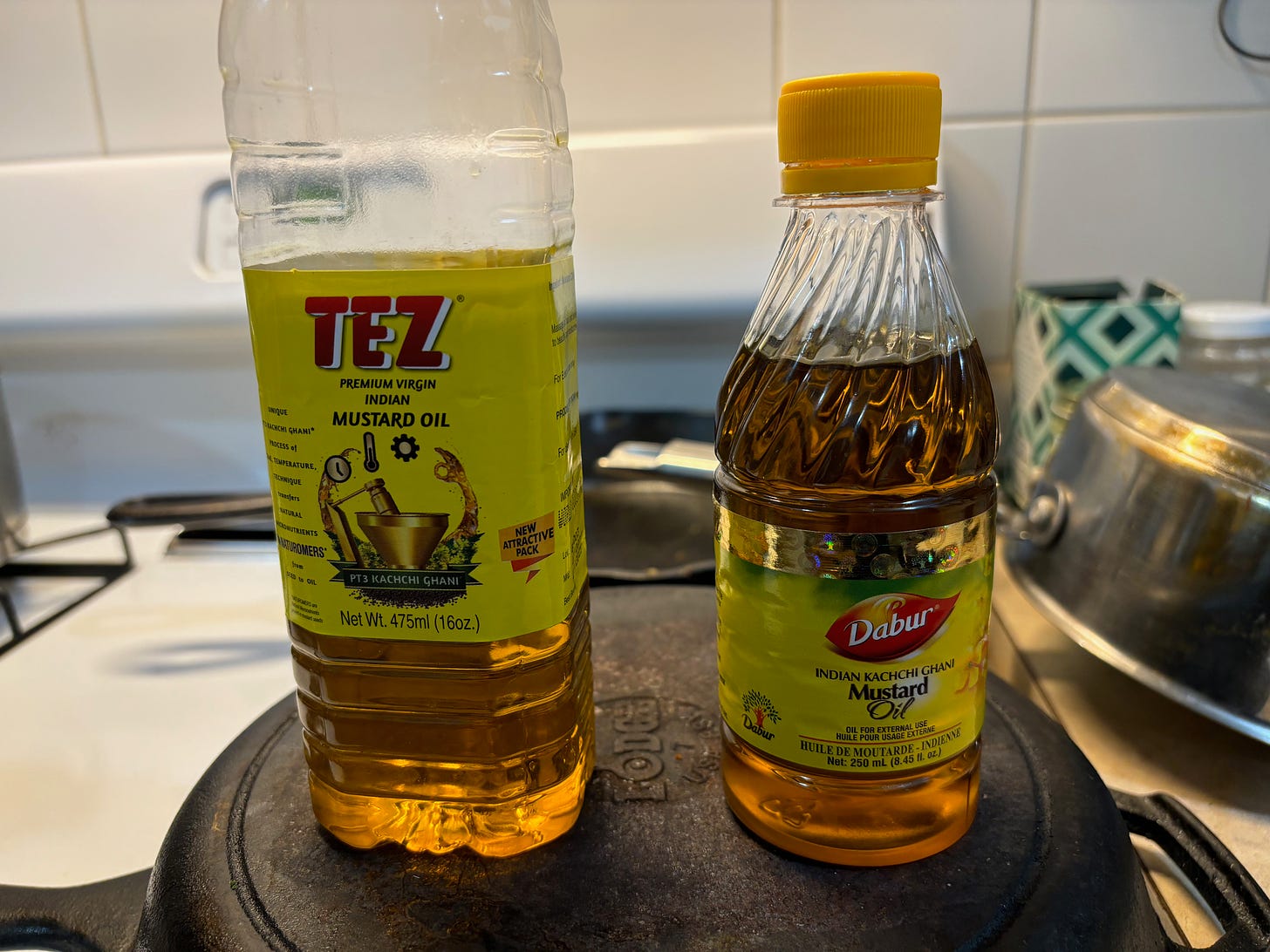


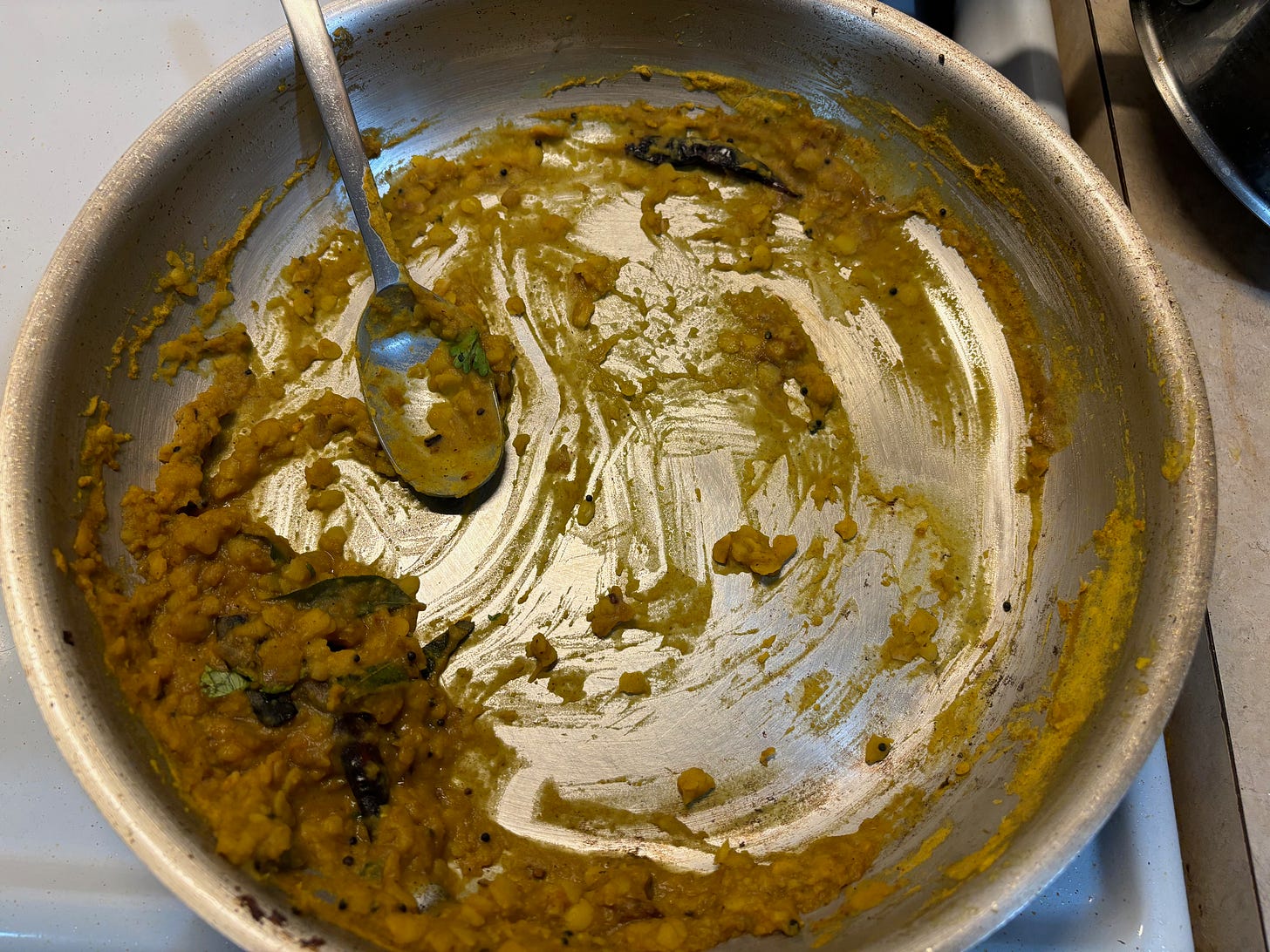


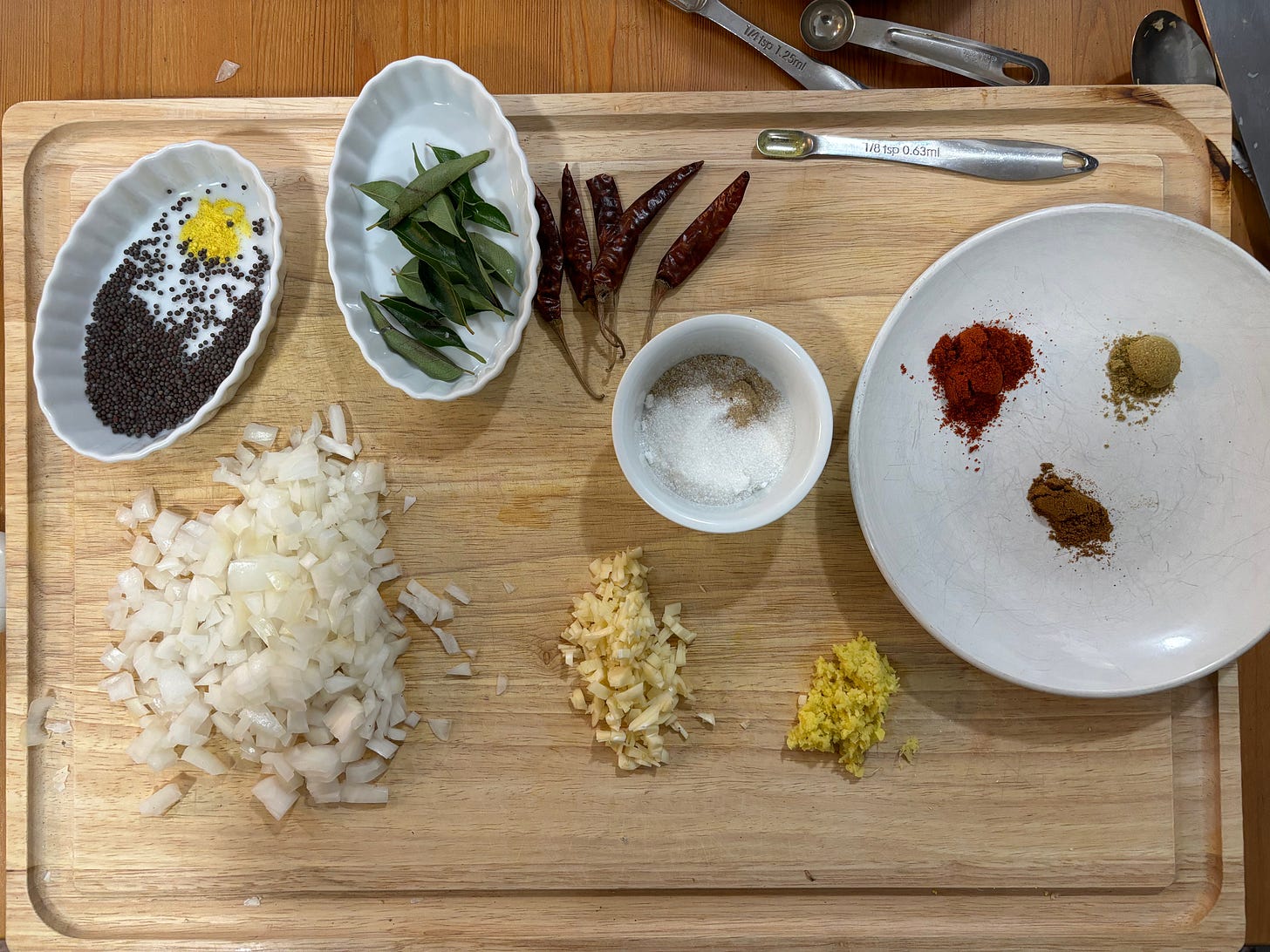
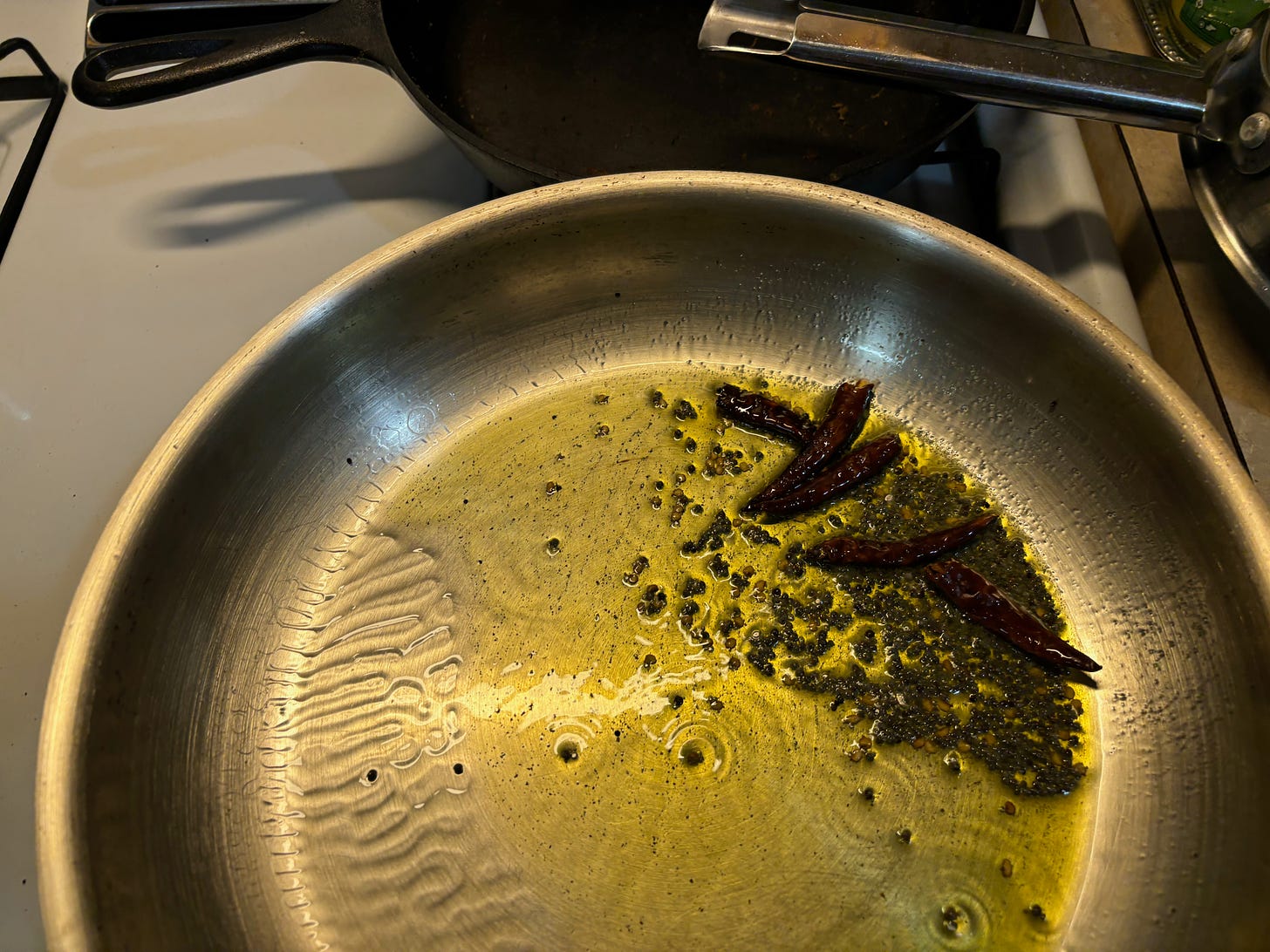

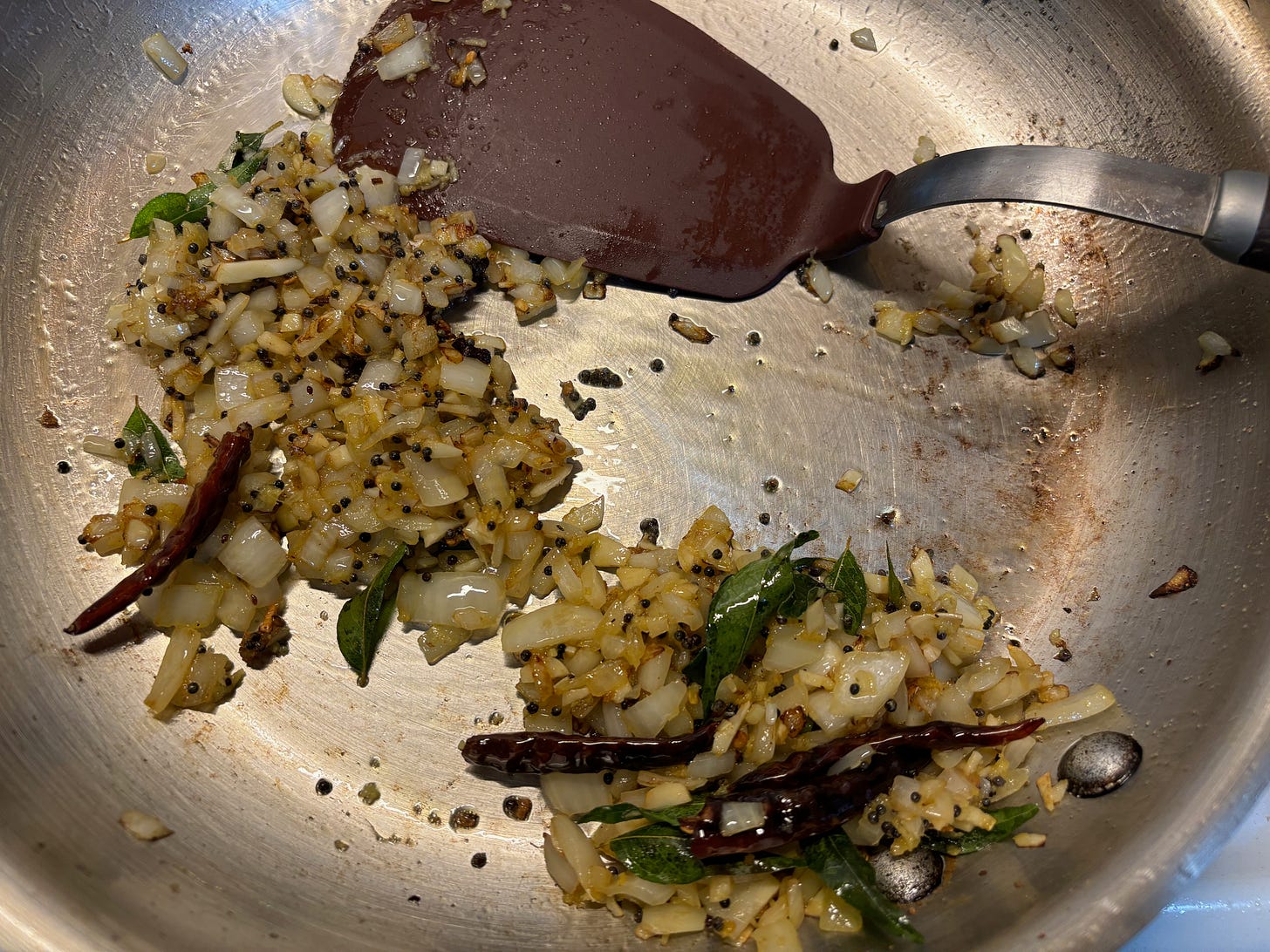

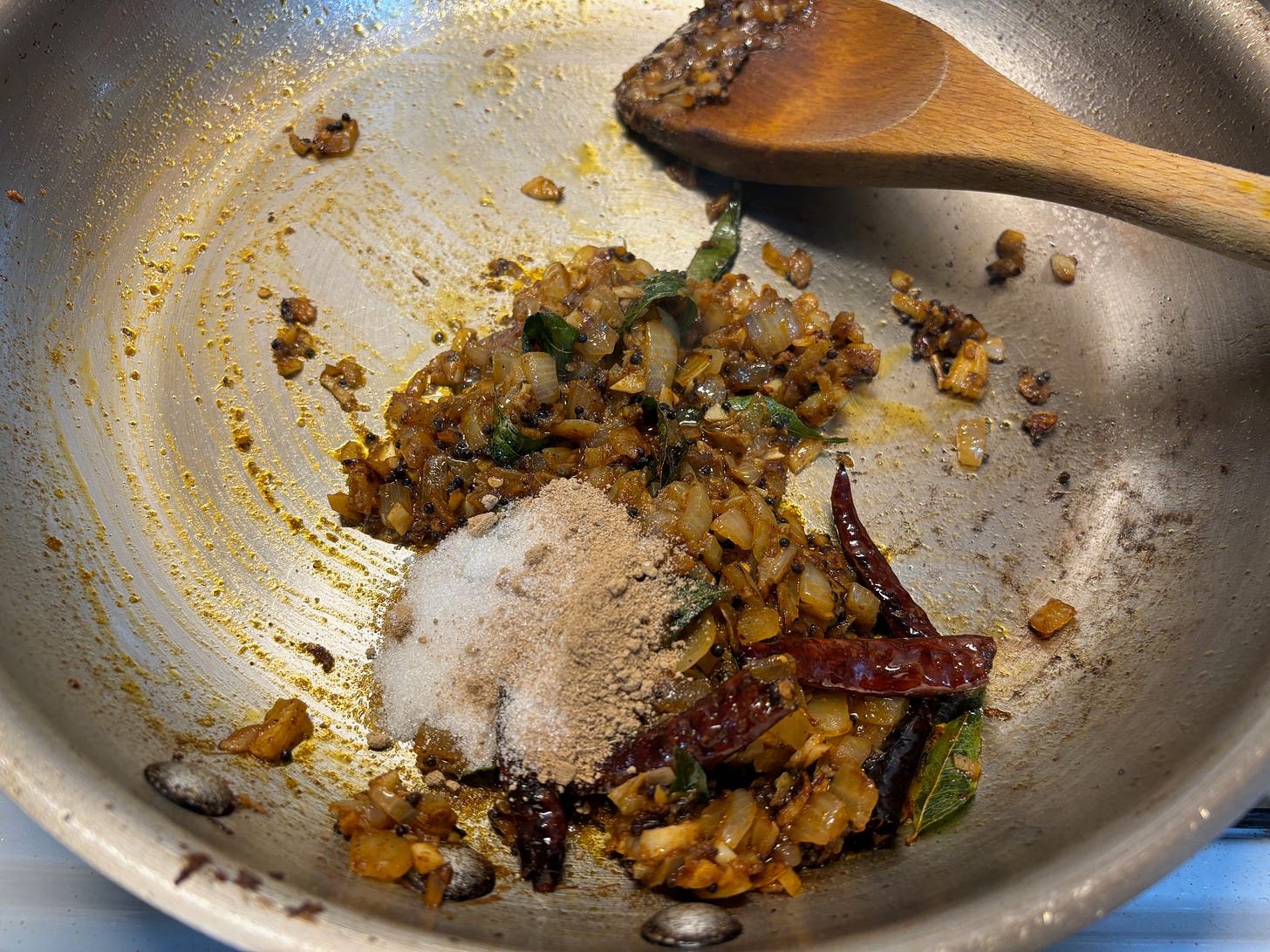


What I have found for curry leaves is that you can dry them and then store them in the fridge. It works better with curry leaves fresh from a plant rather than Indian store ones but still works. The way I do it is line a big plate with paper towel. Spread out curry leaves in a single layer and leave them out near a sunny window/patio. After a couple days they will be dry. You can then store for a long period in a glass jar in the fridge. They still have the same tadka effect and most of the aroma is preserved. Nothing beats fresh ofcourse
I am ready for external use